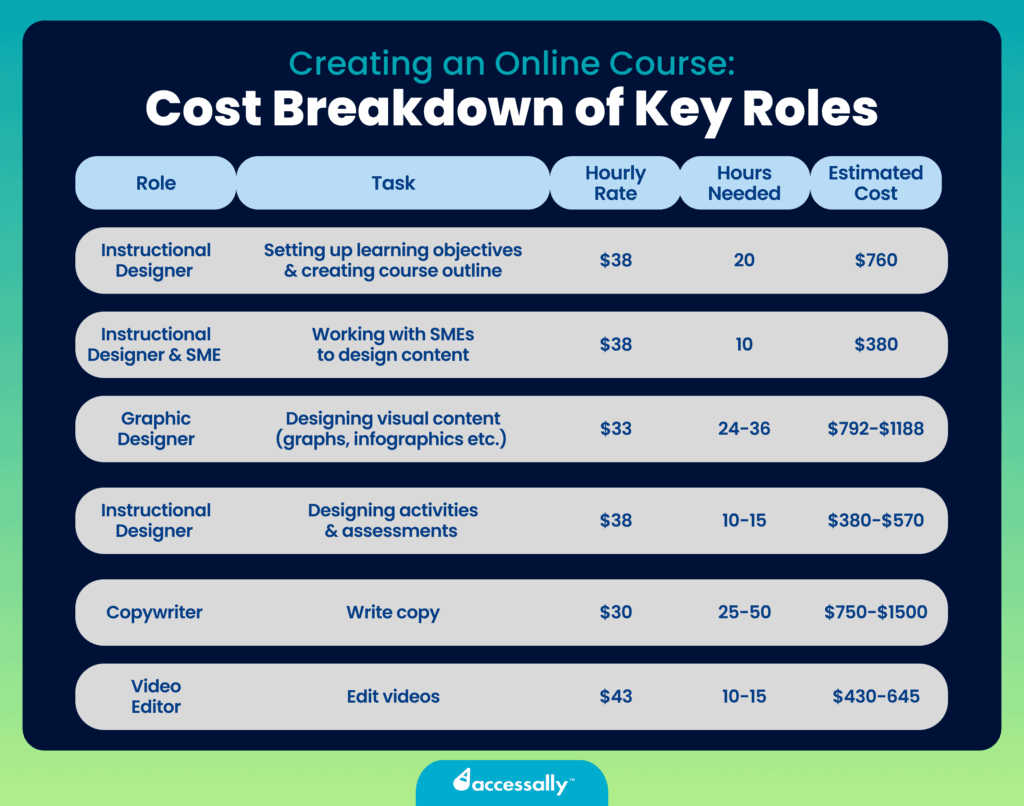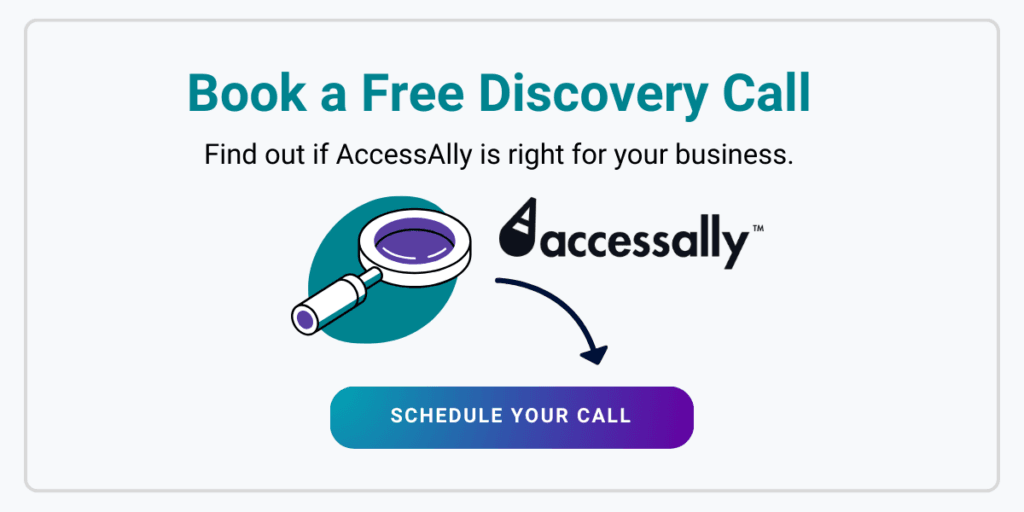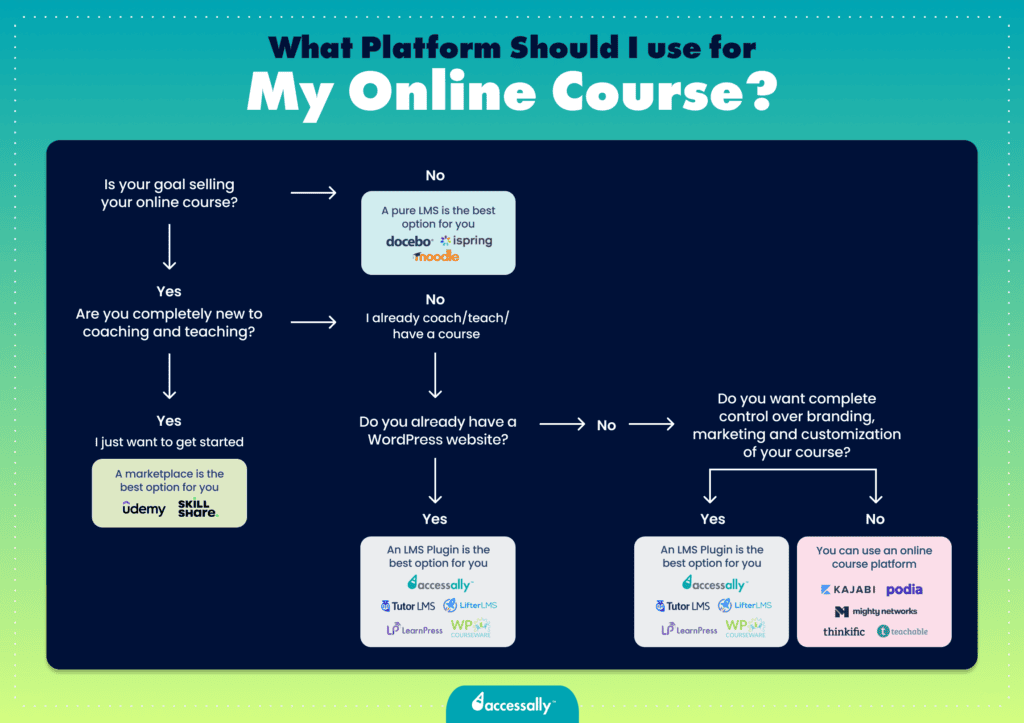If you have a lot of knowledge and first-hand experience on a particular topic, you might be thinking about creating an online course to share this knowledge, grow your business, and make some money while helping others.
But before you start anything, it’s important to understand what costs are involved in creating a course. From curriculum development to hosting and marketing, costs can add up very quickly — not to mention the biggest cost of all: your time.
We’ve put together this article to help you make the most of your investment when creating, marketing, and selling a course.
Regardless of the type of course you want to create or the type of platform you pick, there are 3 major costs to consider:
- Course Creation costs
- Operational costs
- Marketing costs.
Online Course Cost #1: Course Creation Costs
Before you start, it’s important to note that the cost of creating the course (strictly speaking) will depend on several factors:
- Course complexity -> Do you plan on using different multimedia in your online course, such as e-books, graphics, animations, audio, and video? Will you include quizzes or other assessments? Will you provide a certificate at the end? The more different media you’ll use, the more moving pieces you include, the more it will cost you.
- Course quality -> When it comes to videos in particular, production costs will vary greatly: are you hiring a professional team to shoot your videos? Are you shooting indoors or outdoors? Will you need hair and makeup? A teleprompter? There’s a spectrum of quality — and costs — for each element of your course.
- Course length -> Are you planning on producing a mini-course? A long-form course? Know that the longer your course is, the more content you’ll need to create and the more it will cost you.
- Content development -> Any person you hire to help develop your content is going to add to the cost. Think developers, subject-matter experts, copywriters, and translators.


Need some support in creating your course? We’ve created an article that will walk you through how to create an online course: deciding on your course topic, structuring your course, setting the right price, and choosing the right platform to host your course.
Course Creation Cost #1 – Materials
In order to figure out what materials to use in your course, you’ll need to determine who your learners are, how much time they have to study, their demographics, their learning objectives, and their tech-savviness.
Understanding these things about your learners will help you determine what kind of material you need to create for your course. Ultimately you want to engage your learners and help them achieve their goals.
There are lots of tools, equipment, software, and other shiny objects you could spend your money on, but the truth is, purchasing the right tools is the easy part, and it’s hard to go wrong.
There are different types of materials you can produce based on the level of interaction you want your learners to have with the course:
- No interaction: This type of course would just have a video or written material that your learner consumes. It’s most likely asynchronous learning, where learners can participate at their own pace.
- Limited participation: Limited participation courses might add self-reflection prompts or questions, activities for the learners to do on their own, or assignments they complete.
- Moderate interaction: With moderate interaction, you might have your learner participate in graded quizzes or assessments, you as the instructor might provide feedback on activities or assignments, or there might be a community element through which they can get peer feedback.
- Total immersion: This is the highest level of participation and might include live lectures or Q&A session, feedback provided on assignments and activities, peer and social learning activities, and/or one-to-one coaching or feedback.
Whatever level you choose, the more interaction, the more costly the materials will be to produce and deliver.
Course Creation Cost #2 – Content
The cost of creating your course content will be linked to the amount of time you or other people you hire (team members or freelancers) will spend creating it. Of course, cost and quality will vary depending on the creator’s experience.
The chart below offers a breakdown of some of the average costs of hiring freelancers for a basic course:


Depending on the types of content you want to create, you might also need support from:
- Audio Editors
- Developers (for the more interactive content creation)
- Animators
- Voice Over Talent
- Programmers
- LMS Specialists
- Slide Creators
The support you need will depend on how complex your course is. The most basic course could be as simple as a series of written workbooks or exercises in PDFs. The most complex might involve an instructional designer, professionally shot video, animated graphics, LMS specialists to build your learning management system, a copywriter, and a graphic designer. And your course could fall anywhere in between.
Course Creation Cost #3 – Equipment
In order to create a course, you’ll need some tools. We’ll assume you already have a laptop, a smartphone, and an internet connection. That might do for the simplest of courses.
If you’re creating videos, screencasts, webinars, or podcasts, you’ll want to consider the following equipment:
Microphone – $20 to $70 USD
Microphones can be complex, and you can find options from as low as $10 all the way up to over $10,000. While you can use the video camera on your smartphone to record videos, you’ll still want an external microphone. People will leave your course if the audio quality is bad.
Video editing software – $20 to $100 USD
You might have video editing software that came with your computer, like iMovie that comes with Macs. If you’re not planning on hiring a professional, you’ll need to invest in video editing software. Free video editing software exists, but we don’t recommend it. It’s worth investing in a paid solution.
Lighting – $20 to $500 USD
Good lighting will make a difference when it comes to your video quality. You’ve got plenty of choices, from ring lights (that start around $20) to more complex setups (four-point lighting could cost between $100 and $500).
Stock images and music – Free to $100 USD
Another investment that’s often overlooked is for royalty-free music and stock images to enrich your video and text content. Many websites offer either free or low-cost options, either per piece or on a subscription basis.


Online Course Cost #2: Operational Costs
Once your course materials are created, there are ongoing operational costs with delivering it that you’ll want to consider.
Operational Cost #1 – Domain
Unless you’re hosting your course with a course marketplace like Udemy or SkillShare, you’ll need a unique domain name and website host.
The price of a domain name varies with a lot of factors, but if you have a unique course or business name you should be able to register your domain for around $20 to $60 a year.
Operational Cost #2 – Hosting
How and where you will host your course is one of the most important decisions you can make when you’re planning your course.
There are three approaches:
- Self-hosting
- Marketplaces
- All-in-one platforms
We’re not going to get into the details of the three approaches because we have an article that goes into lots of detail. But you can start to understand what you need by using this decision chart:


But let’s break down your options by price:
Self-hosting $$$
Self-hosting can be the most expensive option, but it also offers the greatest freedom, flexibility, and customization.
When you self-host, you will handle your own website design, development, maintenance, security, domain, hosting, video hosting, LMS plugin, SEO, and payment processing, to name just a few. Unless you have a lot of technical skills, you’ll probably outsource a lot of these things to other people.
While this is the most costly option, it’s also the only option that allows you to scale your course.
All-in-one platforms $$
Platforms like Kajabi and Podia aim to offer everything you need to create, sell, and market your course in one place. It’s best for course creators who lack the technical expertise or time for tech management.
Setting up these platforms is much more straightforward than creating your own website, but it’s important to select one that aligns with your essential feature requirements. Many platforms make it easy to set up online schools, landing pages, and facilitate easy content creation.
The drawback of these platforms is that they don’t allow you to scale your business beyond a certain point, and they’re limited in terms of customization. It’s important to evaluate subscription charges for these platforms against your goals and needs; they generally offer monthly or yearly payments.
Marketplaces $
The least expensive option is to build your course on marketplaces like Udemy or Skillshare. It’s a great approach for reaching new students and keeping your costs low, but you have less freedom, for one, both around design and usability as well as how much you can charge.
Marketplaces are good for new course creators, but after a while you’ll probably want to spread your wings. They’re the least expensive option, but also the most constrictive.
Operational Cost #3 – Security Measures
Ensuring the security of your students’ data and course content is crucial. Again, your security needs will depend on where and how you choose to host your course.
Security involves implementing measures such as SSL certificates and firewalls. While basic SSL certificates can be obtained at no cost, premium SSL and advanced security services may incur an annual expense of up to $200. Marketplaces and all-in-one platforms will handle security for you.
Additional Operational Costs
Creating an online course can have some different additional costs (e.g. accounting, legal costs, taxes, etc. depending on the country in which you’re registered).
Online Course Cost #3: Marketing Costs
No matter what your course is about or how awesome it is, you’ll have to do some marketing to let people know that it’s available. Some marketing seems to be “free,” like posting on social media, but it all requires time and energy, and some tactics also require money.
Because we’re talking about online courses, we’ll stick to digital marketing for the scope of this course. Digital marketing is an effective way to attract your first customers to your online course.
Social Media Management, & Paid Ads
Social media and online advertising are both effective forms of digital marketing. They both can be a great way to reach a large audience and reach your target audience, and they both have pros and cons.
Social Media
Social media marketing seems like a no brainer because it’s free to make an account and free to post. But that doesn’t guarantee you’ll reach your target audience. Creating an effective social media presence takes time, persistence, and energy.
You may want to invest in a social media management platform like HootSuite or Sprout Social. These platforms can cost anywhere from free plans to over $1,000 per month.
You can hire an expert for different aspects of your social media for everything from creating an overall strategy to creating the posts and managing your accounts on your behalf. An experienced social media manager could cost anywhere from $20 to $150 per hour.
Paid Advertising
Paid ads are a quick way to get traffic and initial visitors, but it’s important to budget and set spending limits. Managing paid advertising can be done yourself if you are experienced, or you can hire a professional, with costs varying based on quality and your ad budget.
Two things to keep in mind when considering whether to include ads in your marketing mix:
- Is your course already successful? Ads have a tendency to magnify what’s already working — or what isn’t.
- Is the cost of acquiring a lead or sale going to be profitable? It’s easy (maybe too easy!) to spend money on ads, but you have to watch your costs and make sure it’s not eating into your profitability.
The cost of your online ads will vary based on a whole host of factors including what industry you’re in and how expensive your offer is. Sprout Social recommends budgeting at least $5,000 per month for the cost of ads and an ad manager.
Email Marketing
Email marketing is still one of the most highly effective ways to market your online course. You send emails that are useful or entertaining, and those with a goal of converting subscribers into customers.
Email marketing can solidify relationships with your customers, providing relevant information, building loyalty and enhancing audience engagement. You can start building an email list right away and grow it over time.
You’ll need an email marketing service — you’re not allowed to bulk email customers from your personal or business email address. Email services typically price based on the number of subscribers you have. Some start with free plans when you’re getting started, and can go up to hundreds or thousands of dollars per month depending on how many subscribers you have and the features you need.
Affiliate Marketing
Affiliate marketing is a highly popular and profitable method for reaching a target audience. With affiliate marketing, individuals are recruited to promote your online course, and then they get a percentage of the sales in return. Affiliate commissions typically range from 10% to 50% of the sale price for online courses.
Course creators often provide marketing materials, like graphics or pre-written copy, to help them promote your course to their own audiences.
Your course hosting platform or plugin may have affiliate marketing tools built in, or you may need to purchase or subscribe to an additional tool to manage and keep track of your affiliate partners.


4 Tips for Low-Cost Online Course Development
Now that we’ve gone over some of the expenses you may encounter when creating a course, we have a few tips you can use to minimize expenses in developing online courses, allowing for the creation of high-quality e-learning courses on a budget.
One of the best ways to think about your first course is as a “minimum viable product.” This comes from the software development world; the idea is that you produce the simplest version of the course that you can realistically sell and use to help people get the result they want. You can always update and improve it in the future.
1. Avoid Investing in Costly Equipment
One way to minimize startup costs is to avoid buying new equipment. For example, for your first online course, you can use your smartphone camera or webcam to shoot your videos. While you might want to buy an entry-level microphone and an inexpensive ring light, many smartphones are equipped with high-quality cameras that will look just as good as any entry-level video camera.
2. Minimize Outsourcing
Avoid any unnecessary outsourcing at this point. Try to handle as many tasks as possible yourself. If you have to outsource tasks beyond your skills set, explore freelance service platforms, like Upwork and Fiverr, which offer competitive pricing for outsourcing.
3. Keep It Simple
It’s a good idea to keep your first course simple. Courses with low interactivity help keep costs down. Start by developing courses predominantly featuring video content and quizzes.
If you have some, you can repurpose existing content into course content. For example you could modify and repurpose blog posts into PDFS or break down webinars into separate videos.
Remember, you can and should expand and enrich your course gradually to help you avoiding significant upfront expenditures.
4. Pre-Sell Your Course
Pre-selling your course may sound strange at first, but it’s actually a great way to validate your idea and earn some capital to help you produce the course.
You can offer a significant discount or a bonus (like a coaching call or additional materials) to early adopters as an incentive to buy early. Be sure to tell them when you expect to release the course and try to stick to your deadline.
In essence, creating an online course involves a strategic balance between investment and returns. By making informed choices at each stage and following these cost-conscious tips, you can develop a high-quality online course without breaking the bank. Remember, the key is to start with a simple product, gradually expanding and enriching your course as you gather feedback and build a successful online teaching venture.


